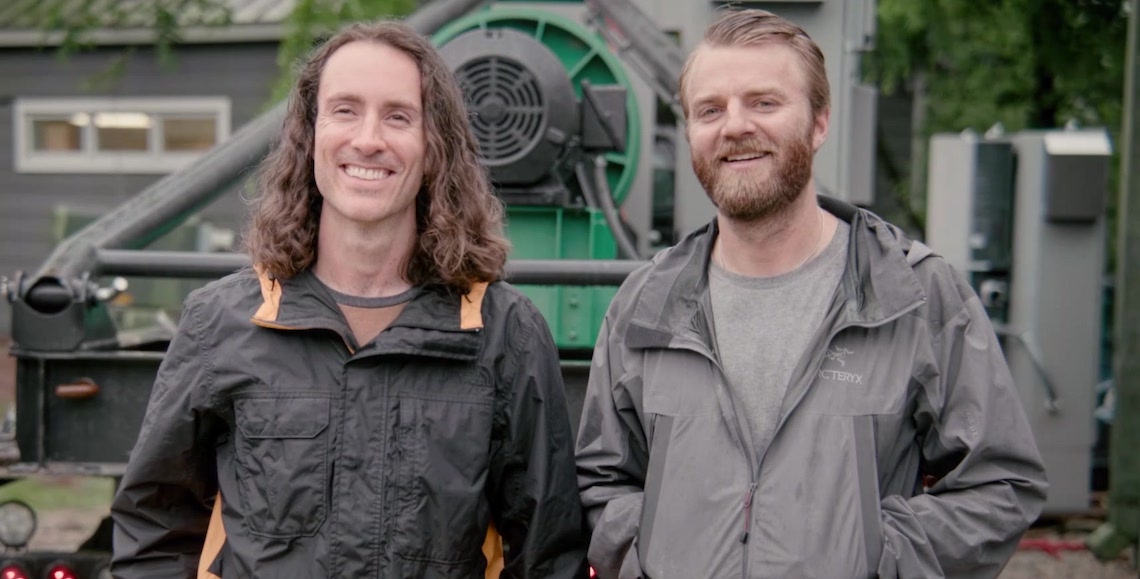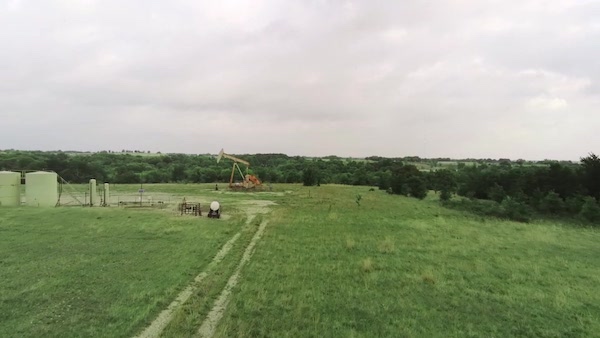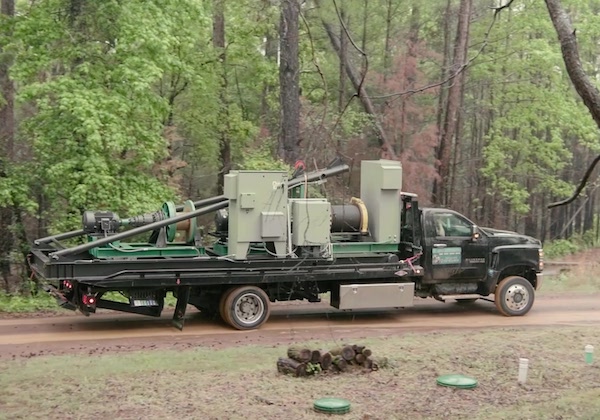
Renewell co-founder and CTO Stefon Streckfus (left) and co-founder and CEO Kemp Gregory (right) were selected for Fresno State’s WET Center’s 7th cohort for its accelerator program. The start-up company is currently working to use abandoned oil wells to create low-cost energy storage. Consensus Digital Media Facebook page photo
Written by Frank Lopez
As of January 2022, there were 1,619,071 documented wells that have been drilled but not plugged in the U.S., according to the Interstate Oil and Gas Compact Commission.
In Canada, there are 372,697.
California’s Department of Conservation counts more than 37,000 known idle wells in the state, with all of them eventually coming to the end of their life. That’s when their operators will be required to plug the wells and decommission associated production facilities.
More than 17,000 wells have been idle over 15 years and more than 5,000 are orphaned, deserted or potentially deserted.
A startup with local ties is hoping to put these abandoned wells to use for energy storage.
Headquartered in Bakersfield, Renewell Energy was selected for the Valley Ventures accelerator program hosted by the Water, Energy and Technology (WET) Center at Fresno State.
They are just about to close out their seed funding round.
Renewell uses pre-existing infrastructure — retired vertical wellbores, energy grid connectivity, communications networks and roads — to create low-cost energy storage.
The energy company plugs and retrofits inactive wells using a propriety, gravity-based mechatronic energy conversion system and an intelligent controls platform for remote monitoring and control.
CEO and Co-founder Kemp Gregory founded Renewell with Co-founder and Chief Technology Officer Stefon Streckfus in 2020.

Originally from Houston, Gregory grew up the son of a small business owner who owned automotive repair shops, spurring a fascination with cars. That led him to study mechanical engineering at The University of Texas at Austin.
He eventually earned an internship at Ford and moved to Detroit. About six weeks in, he realized he did not want to live in Detroit, which would’ve been required to move up the corporate ladder. So, he left.
Since wind energy was beginning to take off at the time, Gregory moved back to Texas and got an internship with Shell in its wind energy group in 2013.
“The same thing happened,” Gregory said. “The first six weeks are amazing, I’m in downtown Houston, I’m working in a big high rise. Then the second six weeks it dawned on me: Shell didn’t really care about wind energy. It was living on a corporate, dusty shelf.”
He did get an opportunity to learn about Shell’s core business, a practice that was just taking off at the time called hydraulic fracturing, or fracking. Whether good or bad, he recognized it was going to have a massive impact on the industry. He decided to learn more about it.
He stayed at Shell for the next five years, working in West Texas, Canada and Argentina. While living in Argentina and working for Shell, he decided he no longer wanted to work in the oil and gas industry.
Gregory wanted to get into clean energy.
He knew that he couldn’t just stop being a petroleum engineer and become a clean tech engineer. So in 2018 he left Argentina, came to California, attended Stanford University and studied everything he could to be well versed in the electricity world.
Soon enough, the idea to take inactive oil and gas wells and convert them to energy storage devices came about.
Gregory met Streckfus at Stanford University and he came on board.
The pair participated in an accelerator program at Stanford, and with other students helping, they were ready to pursue Renewell full-time by their March 2020 graduation.
After graduation, they put the word out for investors. The reaction was mostly positive, but Gregory said he still remembers there was one person who wasn’t impressed.
Through connections they saw what was happening at the WET Center last year, applied for the Valley Venture’s program and were accepted in September.
Gregory said a big reason Renewell would work well in the Central Valley is because there are “tons and tons and tons of wells.”
“California is very bullish on energy storage, and California has a bunch of curtailed energy, because we way overbuilt solar, and California is now having to throwaway a bunch of solar, so the need for energy storage is there,” Gregory said.
He said the California Air Resources Board’s Oil and Gas regulator understands Renewell’s vision and is working with the company.
Renewell will rent the wells from the oil and gas companies for energy storage. He said it would be too expensive for oil companies to clean up the wells — and they don’t want to leave them just sitting there.

It operates like a battery, Gregory said, in the sense that it stores and releases electrical energy, but it does so without electro-chemistry.
A weight is moved up and down a well hole. When the weight is at the top of the hole, there is potential energy due to gravity wanting to pull the weight down.
When the time is right, the weight is allowed to descend, pulled by gravity. In that process, the potential energy is captured and converted into electrical energy.
“When the weight is moving down, we are pushing power to the grid, and when the weight is moving up, that is us pulling power from the grid and reeling the weight back up like a big fishing reel. Out is energy out, and in is energy in,” Gregory said.
There is currently a prototype in the field in East Texas, and by the time the startup is at Series A, Gregory said they want 10 commercial devices bigger that than the prototype in the field.
These 10 wells could power approximately 10 homes — one well per home. But unlike solar, which adds power to the grid, Renewell will take power from the grid and put it back later.
Though they might be borrowing from other industries, he said no one else in the world is doing what Renewell is doing.
With announcements of legislation to curve oil production in the state, and more wells being shut down, Gregory said right now is the perfect time to dip into the well.








